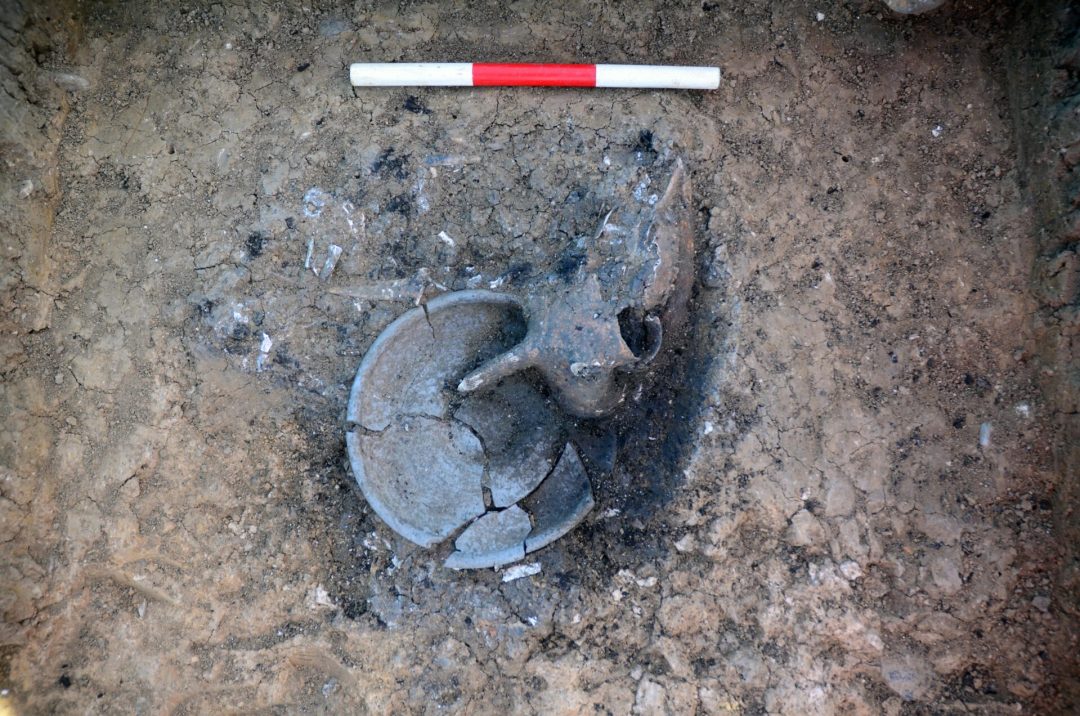This ritual deposit of a butchered adult ewe, with some bones burnt/cremated and others, including the skull, left unburnt and placed on a sandy grey ware platter was buried in the middle of the main enclosure entrance, perhaps marking or protecting this liminal space between the interior and the outside world.
Other apparently ritual/votive deposits included three animal burials (a headless sheep, a puppy and a horse/pony). One of the Late Iron Age enclosures contained apparently unparalleled sheep/goat ‘cremations’: deposits of mixed burnt/calcined and unburnt sheep/goat bones buried without any other material in purpose-dug small pits. These deposits might perhaps relate to funerary feasting or some other ritual activity, especially as unburnt animal remains, including bones of sheep/goats, were found in several of the Late Iron Age cremation burials at the site. These presumably represented food offerings intended either for the deceased or for gods/spirits, perhaps constituting their share of a funerary feast; the sheep/goat ‘cremations’ might perhaps indicate the treatment of the remaining parts of the carcasses. However, other ritual interpretations cannot be discounted given the uncertainty over their dating, their distinct spatial location away from the Mortuary Enclosure and the majority of the burials, and the fact that the closest comparisons for such sheep/goat cremations come from Roman-period sites in London, for example, within the religious precinct at Tabard Square in Roman Southwark.


